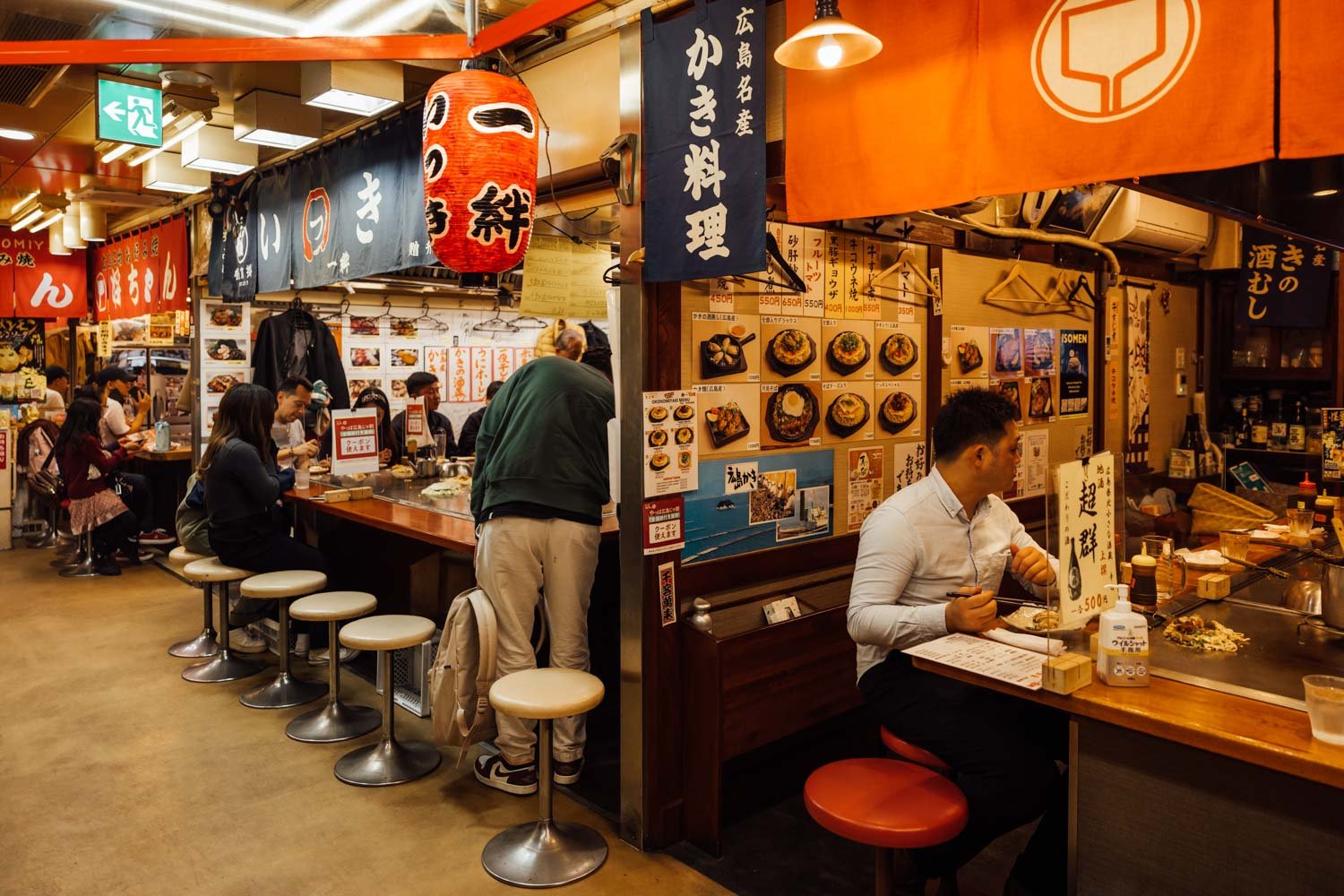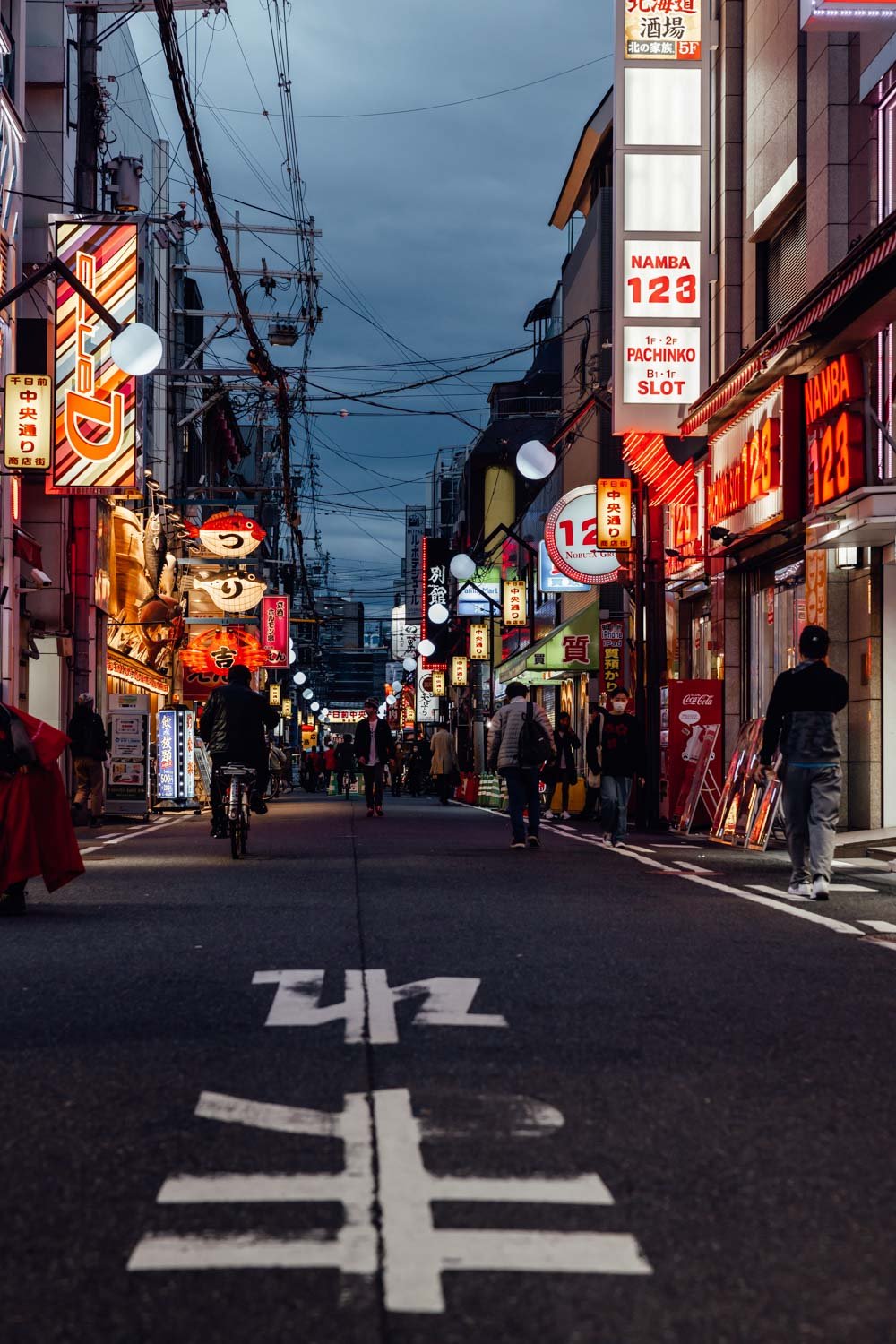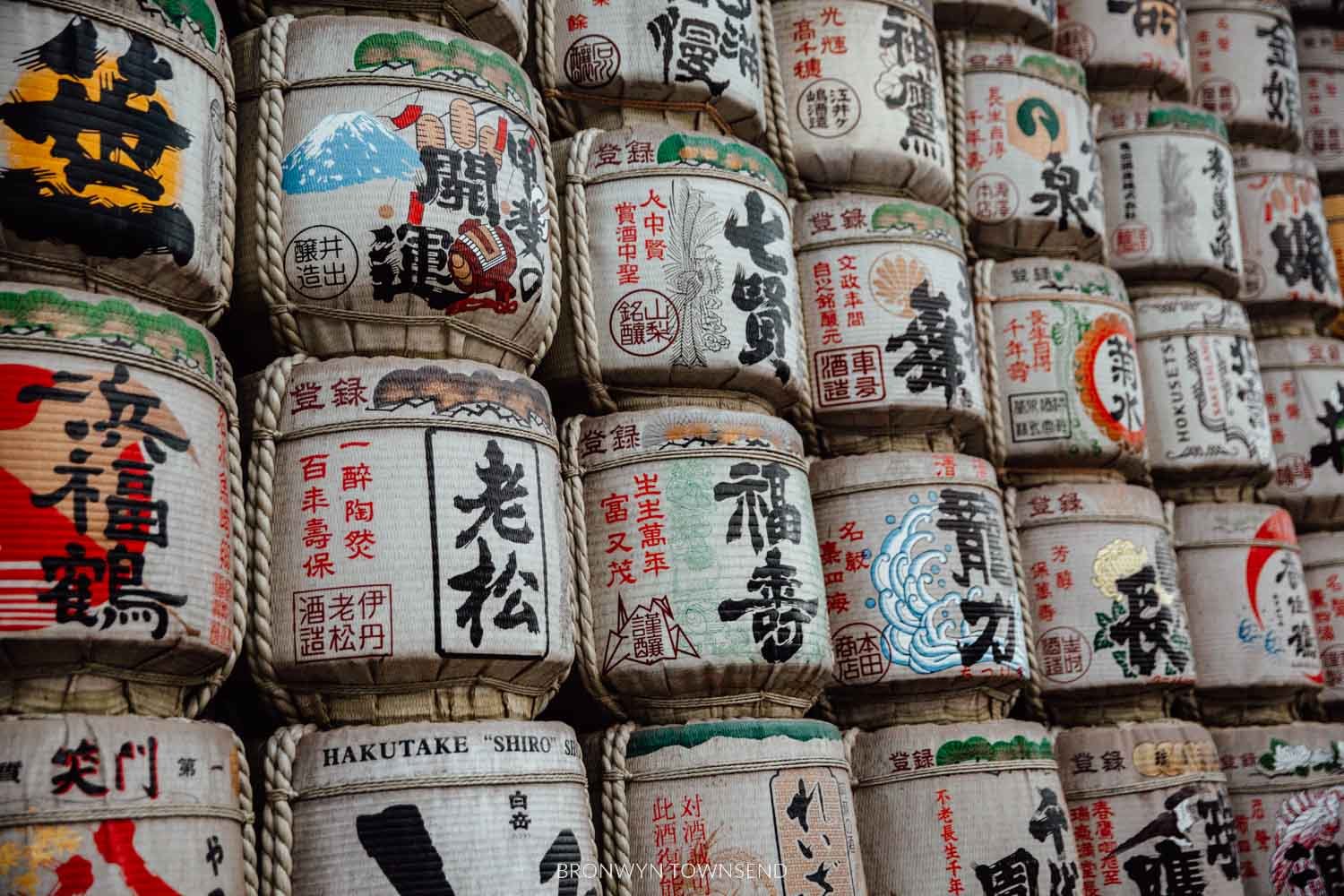19 essential things to know before visiting Japan
Avoid a cultural faux pas with these things you need to know before visiting Japan. Whether it’s avoiding an embarrassing moment in a restaurant or making your life a little easier with the right data packages, these tips should help you navigate the intriguing destination that is Japan.
This post may contain affiliate links.
If you choose to purchase I may receive a small commission at no additional cost to you. By using these links, you are supporting the ability for me to continue creating content for this site and its running costs.
I appreciate your support
Japan is fascinating in every sense. A fusion of modernity and centuries-old tradition, there is a lot to inspire travellers across this archipelago of islands in the far east of Asia. From outstanding natural beauty to an eclectic collection of niche interests, Japan is one of the most popular destinations for travellers and photographers across the globe.
Don’t get caught out by misinterpretation of cultural cues. Here are 19 things you need to know before visiting Japan that will make your experience infinitely easier to navigate.
1 | Cash is essential
Cash is king in Japan. Despite how modern Japan might seem with its neon-tinged streets, robotic-like toilets, and being a hub for technology innovation, cash is still a must-have in your wallet. While digital payment methods have certainly been more widely adopted since the pandemic, there are still plenty of cash-only situations in Japan.
From street markets to mum-and-pop shops, small cafes, and restaurants, there are definitely times you will need cash available. Having a mix of denominations is useful, and coins are handy for vending machines and gachapons. It also means you can provide exchange change in some situations, especially since tipping isn’t the done thing in Japan (more on this later).
Some ATMs don’t support withdrawals from foreign cards. We’ve always found 7-Eleven bank ATMs and most other cash machines at convenience stores to work. The great thing is they are also usually 24/7 which means you can get cash out anytime.
I recommend a travel money card where you can choose your currency. I have been using Revolut for the last six years across the world and love the convenience of being able to top-up and exchange currencies on-the-go, as well as keep tabs on all of my purchases. You can sign up for Revolut here.
2 | Arrange a data sim or pocket wifi when you arrive
Don’t get caught out with no data, trying to find free wifi, or racking up huge international roaming fees. From navigating with Google Maps to sharing the highlights of your trip on social media, you’ll want to have easy access to the internet when you travel in Japan.
The most cost-effective way to do this is by arranging a local data sim or pocket wifi at the airport on your arrival.
A data-heavy sim for 16 days in November 2022 cost us around ¥10,000 each for unlimited data. We were limited to 6GB of data per day, after which the connection would be slow but reset at midnight. We used Google maps a lot and I was uploading content to Instagram throughout the day and never reached the daily limit. Pre-book a data sim for collection at your airport of choice, so you can save time and begin exploring sooner.
Another option is pocket wifi. This is a small device you carry with you that acts as a portable wifi device. The reason we prefer a data sim to pocket wifi is that you need to charge the portable device, and you need to switch it on and off when you want to use it, or risk using all the battery before the day is through.
Not sure whether to choose pocket wifi or a SIM/eSIM? I discuss both in this guide to help you decide.
3 | Google translate will be extremely useful
While in larger cities and tourist areas you’re likely to find an English translation for key messages, the more rural you go, as well as in local establishments like restaurants and shops, English can be hard to come by.
While most Japanese people can speak better English than they tend to admit, Google translate is super handy to have. In particular, the camera feature is useful when translating everything from menus to signs. Despite speaking a very little bit of Japanese, emphasis on the little, we found ourselves using the app every day.
4 | Garbage bins are difficult to find
One of the things that shocks people the most in Japan is how hard it is to find a public bin. You can expect to carry your rubbish with you for hours sometimes while searching for somewhere to toss it.
And, it’s not just locating a bin that is difficult, Japan also has a very stringent way of sorting its trash too. So, make sure you’re disposing of your rubbish in the right bin, they’re usually labelled with the word in hiragana or katakana as well as an image to help.
One of the most common places to find a bin though will be near a vending machine, which are located all across the country on street curbs. Not every vending machine has a bin to accompany it, and most of the time they are only for disposing of cans or plastic, so do check before you toss anything away.
5 | Trains are the best way to get around the country
Japan is famous for its bullet trains, the shinkansen. The country’s high-speed rail network means you can reach destinations in record time, all while watching the views pass by your window.
Tickets for the shinkansen are expensive though. If you are planning to move around a lot, rather than sticking to one city, the JR Rail Pass might be the best value for money. Available in 7, 14, and 21-day options, you can save significantly as the cost of the pass gives you unlimited use of the trains for the duration. You can purchase your JR Rail Pass here with Klook.
IS THE JR PASS WORTH IT IN 2024? FIND OUT
6 | Understand dining etiquette
While you might be used to the old rule of ‘no elbows on the table’, when it comes to dining in Japan, there are a few rules to be aware of to help avoid any dining faux pas. Many relate to the use of chopsticks, but there are others to be aware of too. The most important are:
Don’t use your chopsticks to point.
Don’t rest your chopsticks on the side of your plate or bowl, instead use the chopstick rest, or if none is provided, use the wrapper that your chopsticks came in.
Don’t stab your food with chopsticks.
Don’t pass food with your chopsticks.
Use the wet towel you’re given to clean your hands before you eat.
Dip your sushi in soy sauce in the dish provided, don’t pour it on your food.
Don’t drink alone, wait until everyone receives their drink and Kanpai (cheers) is declared.
Slurping is actually a good thing, slurp away at your soup as a sign of appreciation.
When it comes to paying, place money or your card directly on the small tray provided and accept change and receipts with two hands.
7 | Don’t leave a tip
Unlike many countries across Europe and the Americas, tipping isn’t customary in Japan. In fact, leaving something extra may just cause some unintentional embarrassment. Some bars and restaurants add a sort of cover charge, usually between ¥200-¥500 per person which will also include a small appetiser or bar snack instead. Keep the change and save it for grabbing a drink from the vending machines.
8 | You’ll need to take your shoes off (a lot!)
Removing your shoes can be quite common in Japan and not doing so can cause offence in some situations. Whether you’re visiting someone's home, entering certain accommodation, like a ryokan, dining at certain restaurants, visiting temples, or using a changing room, you’ll likely need to remove your shoes. Save yourself the hassle and wear shoes that are easy to slide on and off.
9 | Don’t eat while walking
Eating and walking is a no-no in Japan. Considered especially rude, this is the reason you’ll often see people consume a drink right beside the vending machine they just bought it from, or snacking directly out the front of the konbini (convenience store) they purchased it from.
There are expectations, like around certain street market stalls, ice creams, or a resealable drink such as a bottle of water. A similar rule applies to smoking. You can only smoke in designated areas, and in 2020 it was banned in restaurants, which might seem very recent for those of us from countries where bans have been in place for a decade or more.
10 | Tattoos are still taboo
Tattoos still aren’t commonplace in Japan like they are in many other countries. Especially among older generations, they remain taboo, mostly because in Japan they are associated with the Yakuza. If you have tattoos you may find yourself restricted in places like gyms, public bath houses or onsens.
While attitudes are shifting, in more traditional places you may be asked to cover up. In other places, you may not be allowed to enter, such as certain hot springs and public baths.
11 | Speak quietly in public
This one is all about awareness of shared spaces. Be mindful of the level and content of your conversations and don’t speak overly loudly or out of tone. This goes for when dining out at restaurants, commuting on the train, or in the street or your hotel.
12 | Understand metro etiquette
Like many cultural norms in Japan, there’s some unspoken rules for riding the metro. Want to blend in like one of the locals? Then follow this guidance:
Don’t speak loudly and keep conversation to a minimum.
Keep your phone on silent and don’t take calls on the metro.
When services are busy, move your backpack to the front.
Don’t eat or drink on the metro, this is only acceptable on the shinkansen.
It’s also worth noting that some trains have women-only carriages, so be aware.
13 | Be prepared for an onsen experience
Onsens are one of the most wonderful places and a way to truly unwind after a long day of walking. Before your sink in and soak though, it’s useful to know a few key things:
Wash before you enter the water at the showers provided.
Onsen are usually separated by gender.
You cannot wear swimsuits or clothing in it, it’s nude bathing. If you aren’t comfortable with this, consider a private onsen experience instead.
Don’t put your hair in the water, make sure it’s tied up.
Don’t dip your head under the water, this is to keep germs away from the healing hot spring water.
14 | Travel light and don’t overpack
When it comes to packing, you’ll want to keep it as light as possible. Hotel rooms in Japan are typically a lot smaller than those in many other countries, which means opening and storing luggage can be difficult if it’s large.
You’ll also want to consider what you can manage transporting if you’re moving around. There are also rules around travelling on certain shinkansen routes with oversized luggage. Of course, you’ll still want a suitcase large enough to cater for any shopping you do, and packing light means more space for all those special souvenirs you’ll be taking home.
15 | Book accommodation well in advance
Japan is a popular destination and is poised to be one of the most sought-after travel hotspots in 2024. Booking in advance will help you secure accommodation in the locations you desire and give you more choice within your budget. Generally, I aim to book my accommodation for 6-9 months in advance.
Booking a hotel room early is especially important during peak travel times like cherry blossom season, Golden Week (early May), and autumn. I book all my hotels with free cancellation on booking.com and this gives me the flexibility to change my plans if I need to.
Looking for recommendations on where to stay in Tokyo? Check out my complete guide on the best areas and hotels to stay in Japan’s capital.
16 | Be prepared for ‘smart toilets’
Japan is renowned for its robotic toilets or electronic bidets known as ‘washlets’. They are found everywhere from shopping malls and hotels to restaurants and in people’s homes. A much welcome feature is the seat warmer which makes for a much comfier visit to the loo in winter.
You’ll also find them equipped with other high-tech features ranging from automatic open/close seats, automatic flushing, and ‘musical’ features for privacy. Some even have a basin on top that provides a more eco-friendly approach where the water you wash your hands with is then used to fill in preparation for the next flush.
17 | Earthquakes are a common occurrence
Japan experiences around 1,500 earthquakes per year due to its positioning where four tectonic plates converge. Add to this that approximately 10% of the world’s volcanoes are located in Japan and you can expect a lot of movement. The majority of these are smaller tremors and not large earthquakes. Japan is also well-equipped for earthquakes, but it’s important to know what to do in case you experience a larger earthquake while you’re there. We were in Nagano when the New Year’s Day 2024 earthquake struck the Noto Peninsula and knowing the basics of what to do was key. While large earthquakes are rare, they do happen, so just ensure you know what to do.
18 | Keep to the left
Much like in the UK, Australia, and elsewhere in the world, sticking to the left is ideal. Think of it as keeping to the same side of the path as you would when driving on the road (which is on the left in Japan).
The exception to this is for riding some escalators. In Kanto and to the east, keep to the left side. But if you’re in Kansai and further west, stick to the right. Generally speaking, the boundary falls somewhere around Nagoya. If you’re not sure, follow the crowd and do as the locals do.
19 | Get familiar with some commonly used Japanese words or phrases
Hello - こんにちは [kon’nichiwa]
Goodbye - さようなら [sayounara]
Good morning - おはようございます [ohayou gozaimasu]
Good evening - こんばんは [konban wa]
Please - お願いします [onegaishimasu] or ください [kudasai]* both can be used, though you’ll hear/use onegaishimasu much more often
Thank you - ありがとうございます [arigatō gozaimasu]
Excuse me / sorry - すみません [sumimasen]
Cheers - かんぱい [kanpai]
I humbly receive - いただきます [itadakimasu]* mostly used before eating a meal
Yes - はい [hai]
No - いいえ [iie]* this isn’t use very often
How are you? - おげんきですか [ogenki desu ka]
The bill please - お会計お願いします [Okaikei onegaishimasu]
Hopefully, you’ve found these tips useful in preparing you for your first visit to Japan. If you’ve been to Japan, is there anything else you would add to this list? Let me know in the comments below.























